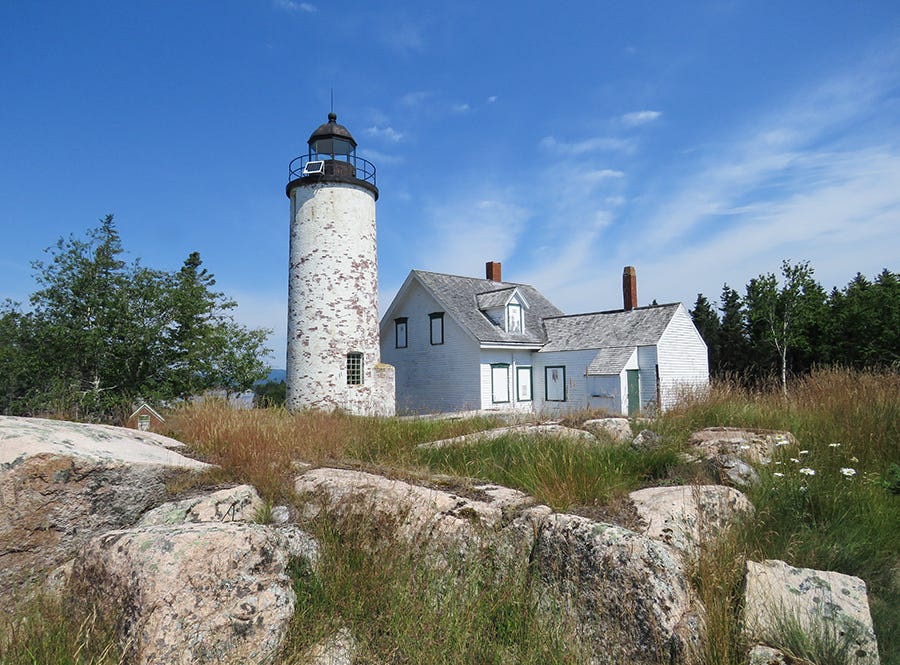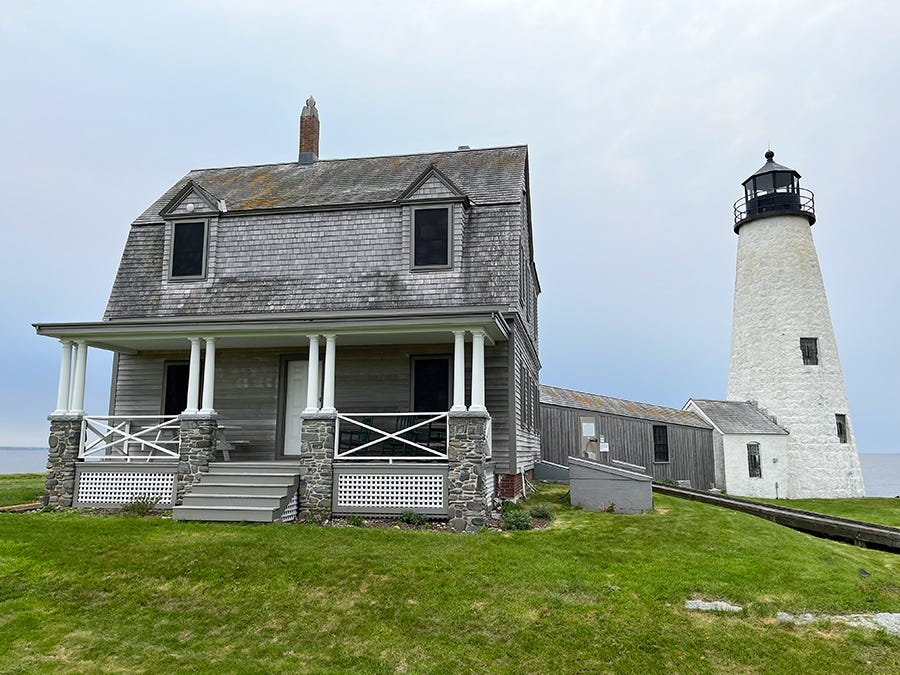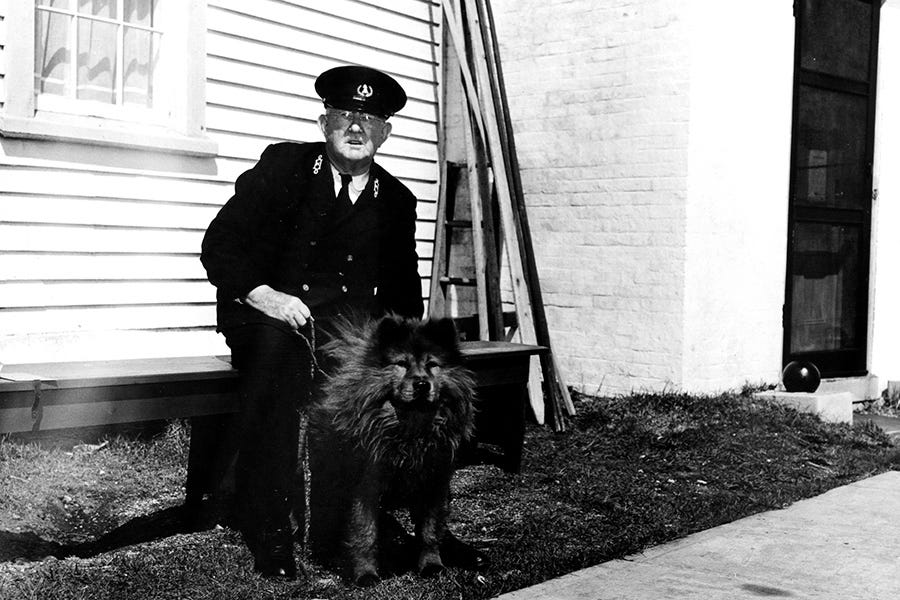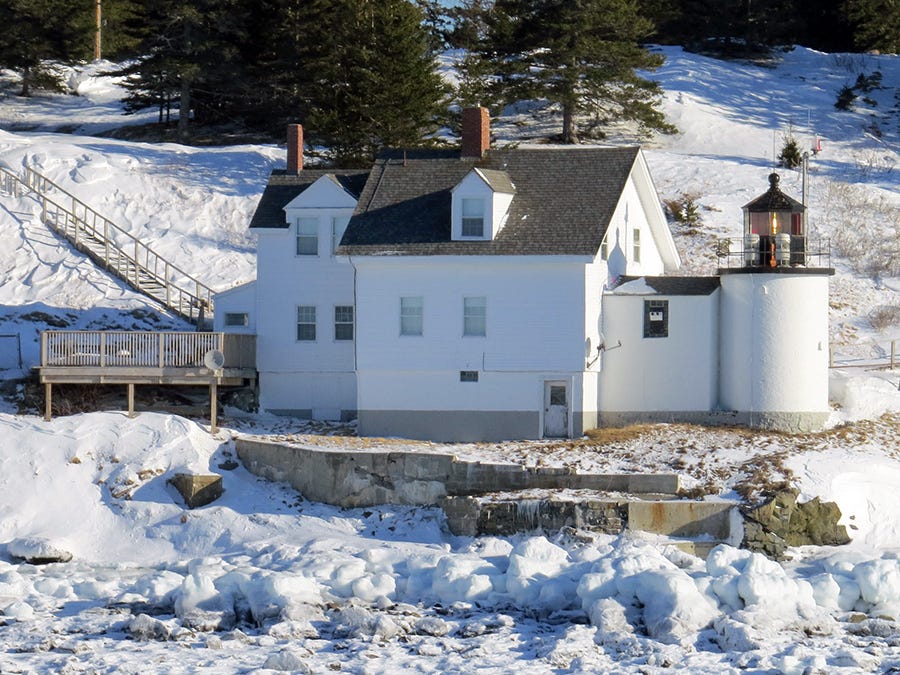Stillness

Years of spending ample time at lighthouses has revealed that stillness is more than a tangled absence of stirring and sound. In the stillness of fog, we listen intently to become more attuned to a seascape unseen. Amidst the stillness of tranquility, the mind and heart emerges untethered from burdens borne.
Yet stillness has another side. One that is relegated to the realities of fate. And if fate yields desolation, then the silence that is deep-seated within it commands an awareness stark and sobering within us.
Why? Because this type of stillness abides solely in a void.

At lighthouses, this emptiness is the consequence of aspiration – the notion that human presence tending to each moment and detail, could be replaced by self-acting advances. However, the automatous can only offer “hands-free” considerations in the name of savings. There is no proportion of efficiency that can put right the loss of human mindfulness and the ability for immediate action upon a sea fraught with peril.
For lighthouses were once a home to families and crews whose presence was duty-bound and essence-filled. If a beacon is deemed the heart of a lighthouse, then assuredly, keepers and their kin were its soul. There was a time when one without the other was simply inconceivable. In many ways, it still is.
Of course, the aim of navigation remains intact at most lighthouses, but these venerable sentinels, as well as their weave of keeper’s houses, whistle houses, boat houses and oil houses, are missing their spirit. Through it all, the unchanging sweep of the wind and pounding surf lend motion and reverberation to these timeless places, yet the clamor is incapable of expunging a stillness begotten by automation.

Today we count our blessings that many light stations are being preserved or on the road to restoration. Others, whose station’s ancillary underpinnings have been repurposed, now support seasonal occupation and the pursuits of learning and culture. The heart brims with joy when encountering lighthouses enlivened by the public’s interaction, but still, a keeper’s home it is no more.
Come wintertime, an emptiness ensues that is heartbreaking to the wanderer. For when the air grows cold and heavy, the weight of missingness feels like a millstone around the collar of lighthouse history. In between each footstep and breath I take during a winter visit to a light station, there is a sense that the entrenched silence resents my showing amid spaces long claimed from the bonds of utility.

That daily zest for life and duty that once permeated the walls of a light tower and dwelling has been vanquished. For a number of bygone dwellings and buildings, the rooms and spaces remain empty. The sound of work and play are absent. No crockery and clothing, no tools and toys – no chatter and chores.
No furniture, rugs, or pictures on the wall. Oh the walls! Within them, silence embodies the stillness. Such damp quietude is disturbed only by the echoes of my presence upon treads of iron or floors of wood. Each reverberation travels – but not very far before being absorbed into time and space. The sense of melancholy is inescapable.
So what are we to make of it all?

I imagine the voice of a keeper welcoming me to their lighthouse – maybe even the friendly bark of a trusty canine too, but my inner yearnings cannot be contented. For reality will have no part in my fanciful illusions.
The path we travel leads only to one place – the horizon of tomorrow. What has been, is still, and yet, is not. Therefore, it is our privilege to carry forward the remaining vestiges and legacy we’ve been gifted – and treasure the smattering of lighthouse memories that hitherto abide. It’s not near enough, but it’s all we have. Even amid the depths of stillness though, I am grateful. For within such silence, reflection shines.




Loved this Bob❣️